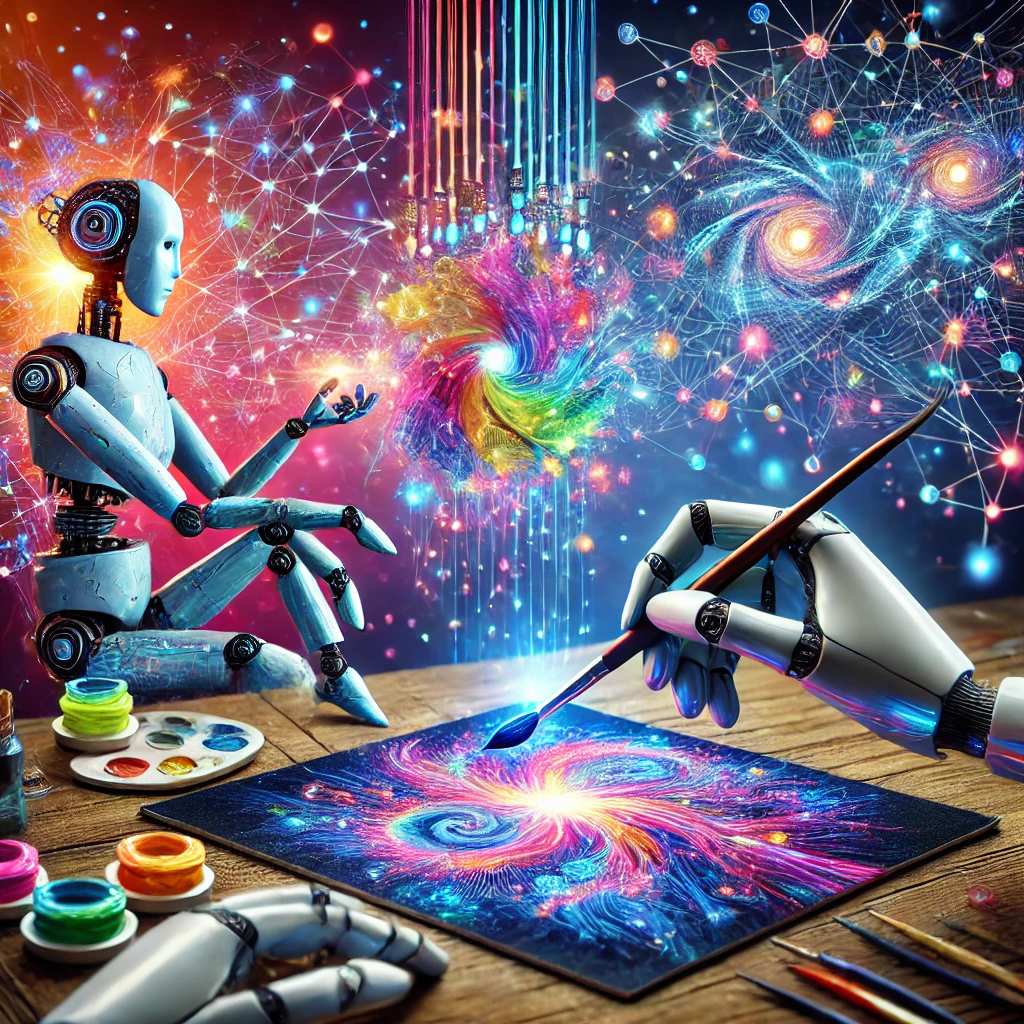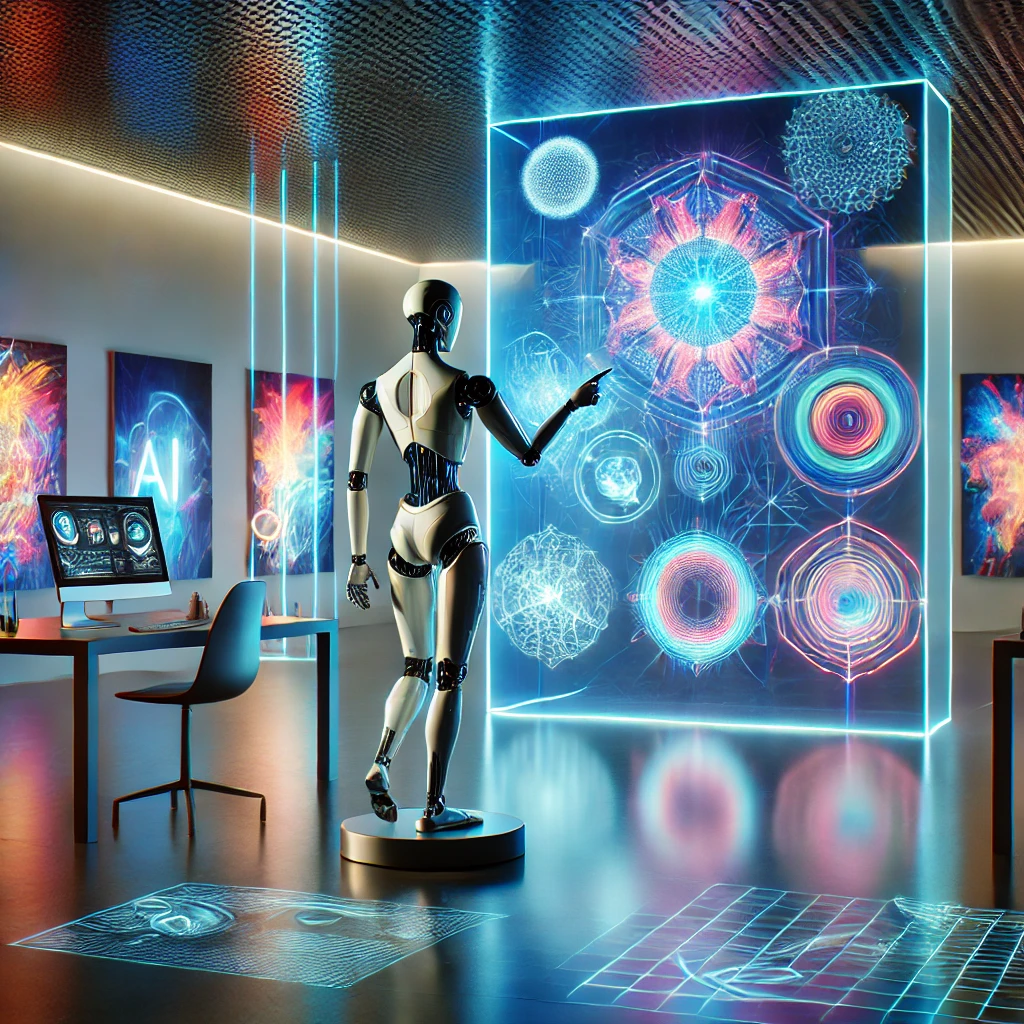The Human Touch in an AI World: Rethinking Creativity’s Boundaries
The speed at which artificial intelligence (AI) is changing the world is astounding. AI tools can now perform tasks that were previously believed to be exclusive to humans, such as creating images, videos, songs, lyrics, music, and so on. But as AI becomes more imaginative, we have to wonder: What role does human creativity play? This article will discuss how artificial intelligence is pushing the limits of creativity and why human interaction is more crucial than ever. The Emergence of Creativity Generated by AI People have been astounded by the art, music, poetry, and storytelling produced by AI systems such as ChatGPT, DALL-E, and Midjourney. These tools can produce original material because they use deep learning models that have been trained on vast volumes of data. According to a 2023 study that was published in Nature Machine Intelligence, AI-generated designs can frequently equal or even outperform human-created ones in terms of quality, at least when compared in terms of speed and technical proficiency. A significant concern is brought up by this quick development: What are humans left to do if machines can create? Recognizing the Limitations of AI AI is capable of simulating creativity, but it lacks the ability to “feel” or “imagine.” AI is based on previously observed patterns. It has no feelings, dreams, or personal experiences. According to researcher and artist Ahmed Elgammal, “AI can produce art, but it cannot suffer.” It is incapable of hope. It is incapable of love. True creativity is shaped by these human characteristics.Real innovation frequently originates from human hardships, aspirations, anxieties, and dreams—domains that artificial intelligence just cannot penetrate. Although AI is capable of producing stunning results, it lacks emotional nuance and intent. How Creative Roles Are Being Redefined by AI AI is evolving into a powerful creative collaborator rather than a substitute for people. Here’s how: • Idea Generation: When we’re at a loss for ideas, AI can offer fresh suggestions. • Accelerating Repeated Tasks: AI can manage preliminary drawings or sketches, freeing up humans to add more intricate, sentimental details. • Collaboration: Just as earlier generations used cameras, typewriters, or Photoshop, artists, authors, and designers are now employing AI as a tool.According to a 2024 PwC analysis, by 2030, artificial intelligence will augment rather than replace 70% of creative jobs, making the creative sectors more inventive than ever. Examples of Human-AI Collaboration in the Real World 1. Musicians like Taryn Southern have worked with AI to create music by fusing human emotion and lyrics with machine-generated tunes. 2. Composing AI is being used by writers to create outlines and generate ideas. Nonetheless, human experience continues to provide the final voice, comedy, and emotional weight. 3. The Visual Arts AI-generated pictures are now included into paintings and digital artwork by artists, who remix and reshape machine output to suit their own aesthetic. According to creativity expert Margaret Boden, “Humans still provide the spark of originality, but computers can help us explore the vast space of possibilities.” Why Human Touch Is Still Vital Some essential human components cannot be replicated by even the most intelligent AI: • Real emotion: Algorithms cannot replicate true feelings of joy, wonder, or heartbreak. • Cultural comprehension: AI finds it difficult to understand complex customs or profound cultural connotations. • Moral values: When making creative decisions, humans contribute ethics, values, and context. According to a 2024 Adobe Creativity Survey, 85% of customers think they can detect whether a piece of writing or art is “soulless” and that they like pieces that show genuine human feeling.This implies that consumers still yearn for the passion and humanity that go into creative works, even in a world where artificial intelligence is pervasive. The Future: AI-Enhanced Human Creativity Looking ahead, human + AI is more important for creativity than human vs. AI. Imagine a society in which musicians combine machine-suggested sounds with meaningful lyrics; artists remix AI designs to convey unfiltered, intimate emotions; and writers use AI to brainstorm more quickly while still telling incredibly human stories.The fundamentals of creativity—human imagination, emotion, and originality—will not change, but the instruments will. In the words of Steve Jobs: “Technology alone is not enough — it’s technology married with liberal arts and humanities that yields us the results that make our hearts sing.” In conclusion, there are no limits to creativity. AI is increasing the possibilities in the fields of music, design, writing, and art. Old borders are being blurred, but it also serves as a reminder of how important human interaction is now more than ever. Those that use AI as a tool in this new era, while maintaining their distinct human essence, will redefine creativity for future generations. The creative process is not coming to an end. A fascinating rebirth and revival is taking place.
The Human Touch in an AI World: Rethinking Creativity’s Boundaries Read More »


